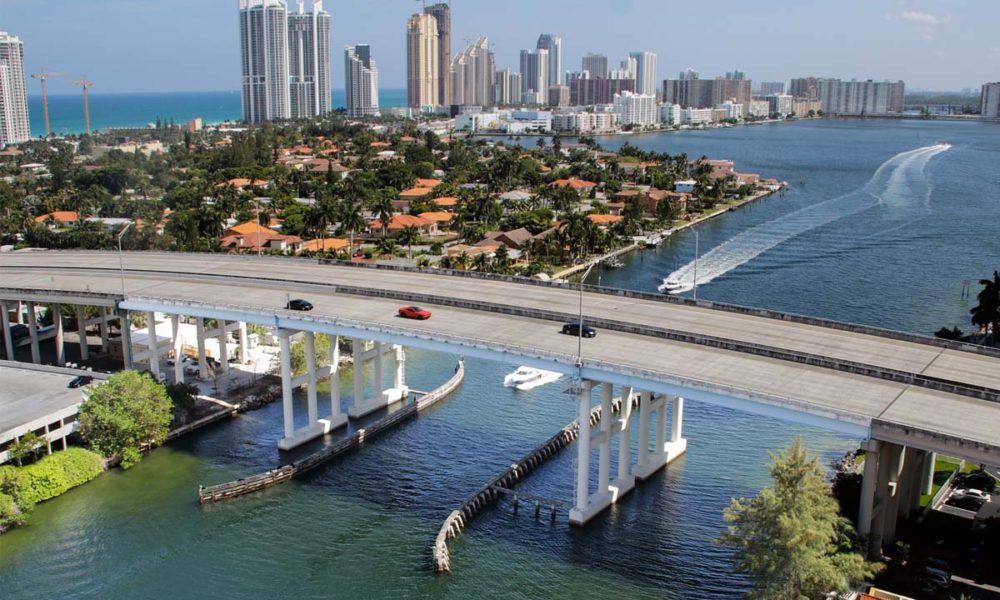For those who have visited Miami Beach you most likely arrived by driving over one of the several causeways that that rise up from the mainland of Miami and as you descended on this beautiful barrier island you noticed the rise of tall condo buildings crowding out to the beaches. The City of Miami Beach is a 12-mile-long island at the southeastern tip of Florida along the Atlantic Ocean, that has gone through large booms of development in the 50’s, the 80’s and exponentially over the last decade. Climate change and sea level rise has put all this development in danger and is estimated that it could put over $400 billion of real estate and business at risk. The city decided that something had to be done to be more resilient and to mitigate the effects of climate change for its residents and businesses.
The question was, “How?” How could they make sure that the great investments and building developments that are helping their economy, growing their city, and making Miami Beach once again one of the most popular destinations in the world, how could they be less impactful on the local environment and not contribute to climate change and the sea level rise that threatens them? For this answer, they reached out to several experts including the local Living Building Challenge’s Florida Collaborative and its Lead Facilitator, Jonathan Burgess. The answer to their question was a difficult one for Jonathan to answer and has been long discussed and debated by the professional building community for years.
The discussion of the relationship between the buildings and the environment is one that Jonathan Burgess knew well. It is one that has led to the emergence of several sustainable building certifications programs such as Leadership in Energy and Environmental Design (LEED) and paved the way for the International Living Future Institute’s (ILFI) Living Building Challenge, which is one of the most forward looking sustainable building certification programs around. Jonathan studied the interaction between the environment and design as a Landscape Architect at the University of Rhode Island before he moved to Miami Beach and became a LEED Accredited Professional in Building Design + Construction and in Neighborhood Design, while working for The Spinnaker Group, a LEED Consulting Firm and volunteering on the leadership board of the U.S. Green Building Council. The work and his professional interests led to him becoming involved in and studying with the Living Building Challenge and how to take the built environment even further by having a Net Zero effect on the environment. As the situation in Miami Beach is urgent and the City officials wanted the best possible way to mitigate harm to their beautiful island, Jonathan knew that International Living Future Institute’s Living Building Challenge or Petal Certification would be the most forward-thinking sustainable building program to help the City to be more resilient.
The City of Miami Beach had already been developing the Sustainability and Resiliency Building Code and considered encouraging sustainable buildings with incentives for LEED Gold & Platinum Certification. However, they wanted Jonathan’s input on what would be a competitively comparable and positive alternative, which was agreed to be the International Living Future Institute’s Petal Certification or Living Building Challenge. Chapter 133 of the City of Miami Beach’s Sustainability and Resiliency Code mandates that all new construction over 7,000 square feet or additions over 10,000 square feet must pay a Sustainability Fee payment bond or full payment, which can only be reimbursed partially for LEED Certified or LEED Silver Certification buildings, and 100% reimbursed for LEED Gold Certification or ILFI Petal Certification, or for LEED Platinum Certification or ILFI Living Building Challenge Certification. This forward-thinking building code is the first of its kind in the world. Nowhere else has ILFI’s Petal Certification or Living Building Challenge been mandated as part of the building code.
The fact that the City of Miami Beach asked the question on how it could mitigate environmental impact in this time of climate change and answered with the ILFI’s Net Zero approach is a huge step in the right direction for resiliency at this dire time in the world. When asked about what he thinks this code will mean to other municipalities and governments around the world, Jonathan said “I hope it encourages other sustainability leaders around the world and in the ILFI’s Living Building Challenge Collaboratives to reach out to their municipalities, government, and building leaders to discuss forward-thinking approaches to building that will reduce their impact and help us all to mitigate or be more resilient to climate change” This a hope that the City of Miami Beach has taken to heart and will hopefully help keep it as one of the top world destinations to live and vacation for years to come.



